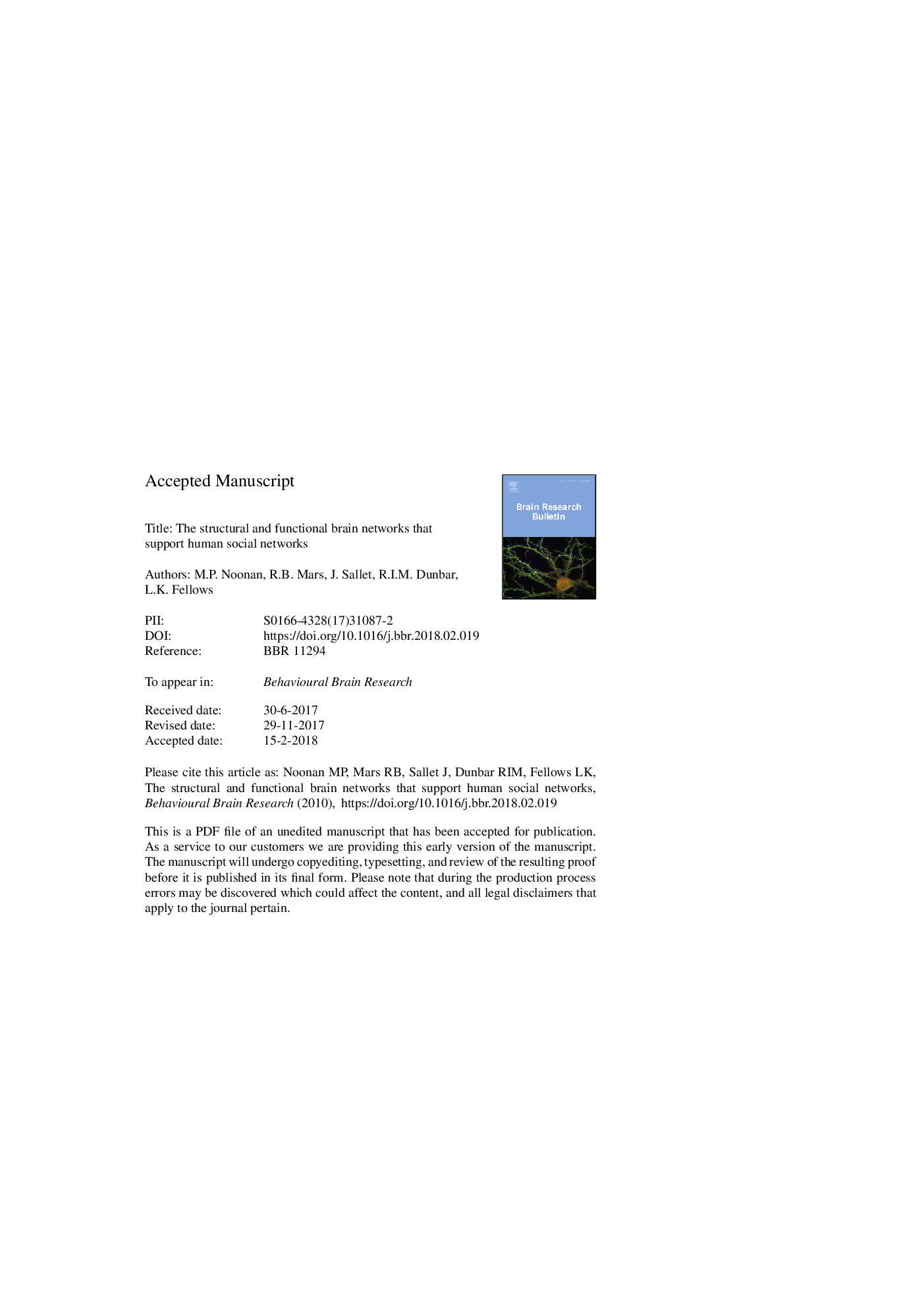| Article ID | Journal | Published Year | Pages | File Type |
|---|---|---|---|---|
| 10223041 | Behavioural Brain Research | 2018 | 42 Pages |
Abstract
Social skills rely on a specific set of cognitive processes, raising the possibility that individual differences in social networks are related to differences in specific brain structural and functional networks. Here, we tested this hypothesis with multimodality neuroimaging. With diffusion MRI (DMRI), we showed that differences in structural integrity of particular white matter (WM) tracts, including cingulum bundle, extreme capsule and arcuate fasciculus were associated with an individual's social network size (SNS). A voxel-based morphology analysis demonstrated correlations between gray matter (GM) volume and SNS in limbic and temporal lobe regions. These structural changes co-occured with functional network differences. As a function of SNS, dorsomedial and dorsolateral prefrontal cortex showed altered resting-state functional connectivity with the default mode network (DMN). Finally, we integrated these three complementary methods, interrogating the relationship between social GM clusters and specific WM and resting-state networks (RSNs). Probabilistic tractography seeded in these GM nodes utilized the SNS-related WM pathways. Further, the spatial and functional overlap between the social GM clusters and the DMN was significantly closer than other control RSNs. These integrative analyses provide convergent evidence of the role of specific circuits in SNS, likely supporting the adaptive behavior necessary for success in extensive social environments.
Keywords
FNIRTSNSCorpus callosumATCDLPFCILFSensory motorMNIEPIDMNRSNIFOFFWHMMLFrsfMRIDASEMCMiddle longitudinal fasciculusROIGLMPCCICAExtreme capsuleACCdMRIBrain extraction toolPrecuneusOptic RadiationsCingulum bundleIndependent component analysisinferior fronto-occipital fasciculusDiffusion magnetic resonance imagingResting-state functional magnetic resonance imagingCerebral Spinal FluidResting-state networksBETfull width half maximumarcuate fasciculusinferior longitudinal fasciculusfornixpreCposterior cingulate cortexanterior cingulate cortexdorsolateral prefrontal cortexGray matterCSFGeneral linear modelregion of interestMontreal Neurological Institutefractional anisotropy
Related Topics
Life Sciences
Neuroscience
Behavioral Neuroscience
Authors
M.P. Noonan, R.B. Mars, J. Sallet, R.I.M. Dunbar, L.K. Fellows,
